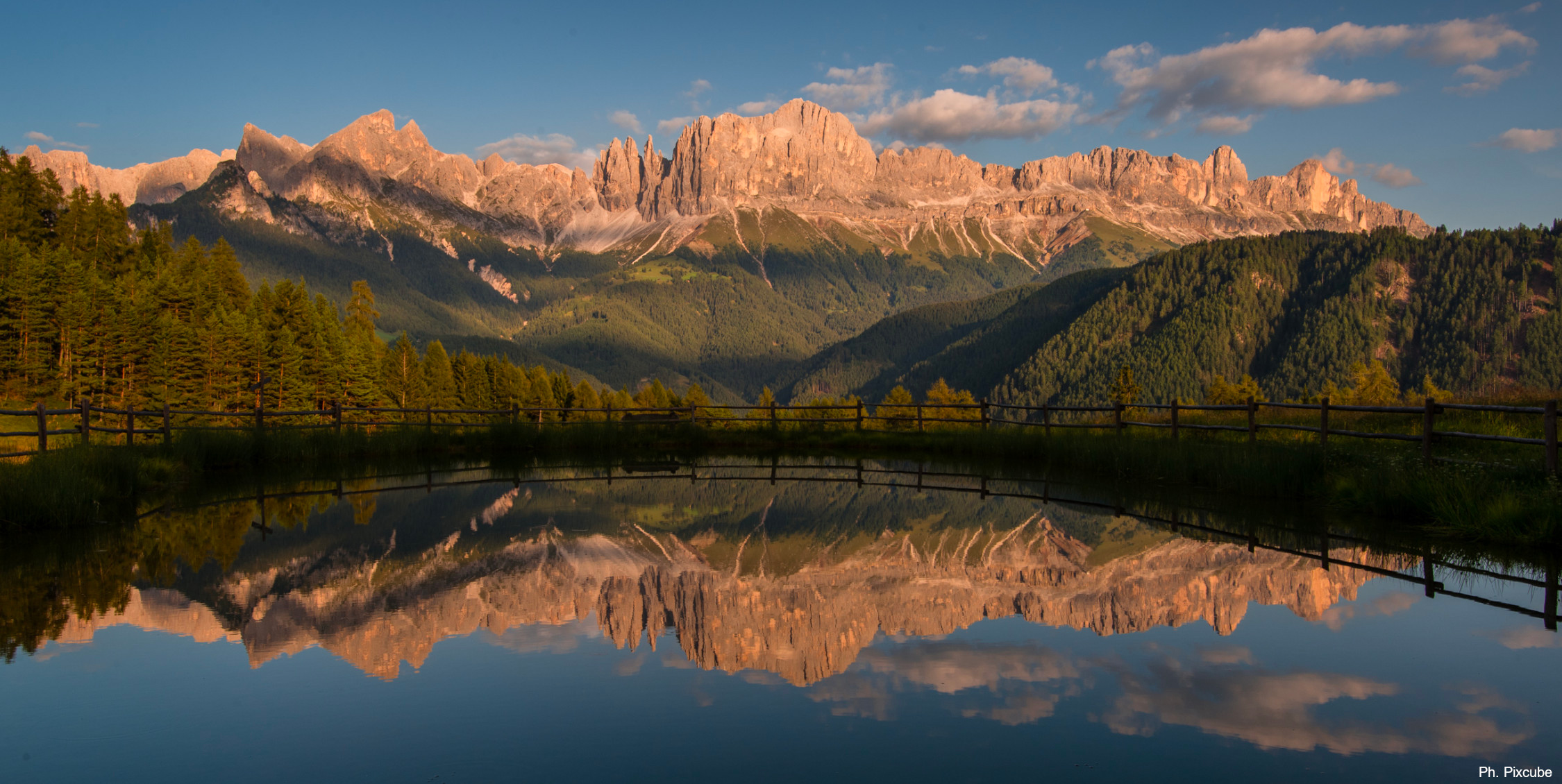Landscape value
The draw of complexity
One distinctive feature of the Dolomites that has contributed to their iconic status is the complexity of the landscapes. There are recurring visual elements, that combine in ever-different ways in the eyes and imagination of the observer. Viewing a map or satellite image of the area, the first thing that is noticed is the extremely complex topography. Many isolated mountain groups are clearly evident, separated by deep incisions, with valley floors showing varying degrees of human settlement.
And when actually walking through these mountain groups, one is struck by the unusual variety of different shapes present, both vertical (rugged peaks, needles, towers, pinnacles, teeth, etc.) and horizontally (ledges, ceilings, overhangs, slopes, plateaux, etc.). In the legends, these features already become the structures of great castles, but there are also contemporary connections to architectural works with Le Corbusier, who defined them “les plus belles constructions du monde”. Finally, the Dolomites offer exceptional contrasts of colour, thanks to the richly varied tones of the vegetation and rocks. This is the only region in the world, for example, where pale dolomite rocks are found alongside dark volcaniclastics rocks.
These hugely evocative landscapes of the Dolomites, which capture the imagination of anybody who visits them even once, has led to the name being borrowed in other areas of the world: there are also Dolomites in France (Dolomites Françaises), in Austria (Lienzer Dolomiten, Salzburger Dolomiten), in Switzerland (Unterengadiner Dolomiten), in Italy (Dolomiti Lucane, Dolomiti Siciliane), in Norway (Porsangerdolomitt), and in Slovenia (Polhograjski Dolomiti).


